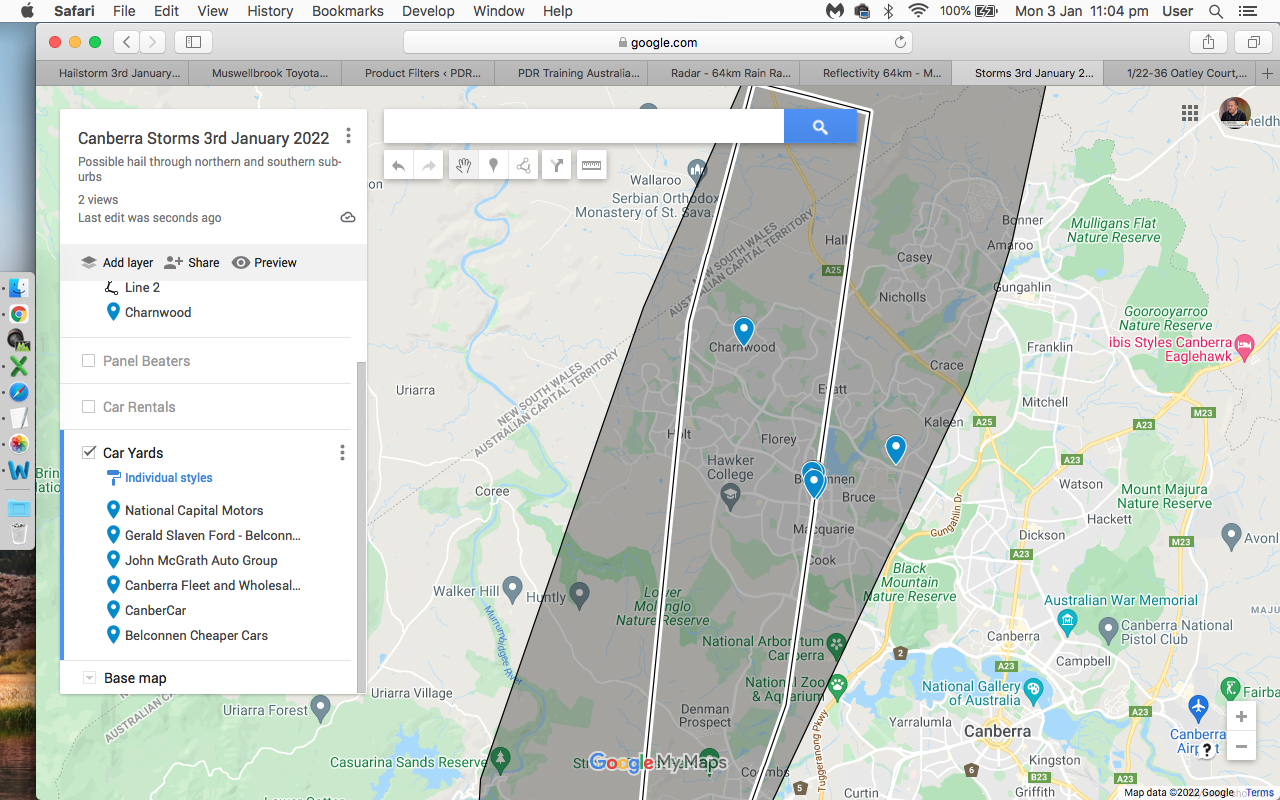
Often general forecasts from the various agencies lack the detail required to predict hailstorms 24 hours to up to a week ahead. It is possible of course possible to provide such assessment of hail risk with an accuracy of up to 95% particularly on the day prior to the actual day. Nevertheless, more often than not, a study of special models and their variable behaviour can provide sufficient lead time forecasts for those involved in various industries immediately associated with or affected by hail to prepare for the onslaught of hailstorms. We may not be able to stop hailstorms, but effective preparation can reduce to risk to life and property. Of course warnings of hailstorms generally are issues with lead time of minutes up to a few hours but it is more for an alert in near real time. For major corporations, warnings are not sufficient for planning of that days' activities.
Generally, forecasts are issued on a risk basis.
- Low risk events, represent anticipated conditions that are low risk in nature. In other words, the temperatures aloft may be too warm for significant hail production and it would require potentially strong updrafts to punch much higher into the atmosphere to achieve the freezing levels for hail production. Other factors for assessing low risk are low instabilities, lack of surface moisture, lack of low level organisation and very isolated activity. It also is more often associated thunderstorm organisation conducive to hail sizes that just tip into the severe hail threshold - 2cm or greater but usually not more than golf ball in size. Severe thunderstorms or usually briefly met and not long lasting before the storms collapsing due to lack of organisation.
- Moderate Risk event are those with higher potential. This could mean that the mid-levels are either cooler, there is more instability, better organisation, sufficient low level moisture and the atmospheric winds are favourable for atmospheric organisation. The moderate risk is often issued when some ingredients are there for potentially large hailstones but there is an element of uncertainty perhaps some inhibition factor perhaps preventing or limiting convection, the coverage is not so dense with expected severe thunderstorms or local conditions may enhance specific storms to become severe. Organisation on these days is such that storm survive with time frames of up to an hour or so. Moderate risks can still produce some particularly dangerous thunderstorms namely supercells if the conditions that were conditional or limited overcome thresholds or more favourable matching of the conditions that were not predictable due to uncertainties came together.
- High Risk events refer to events that are almost obvious and are a matter of waiting for the first convection and storm warnings are issued. They usually consist of dangerous storms or widespread severe weather coverage. The hail potential on these events are of minimal golf ball sized hailstones to cricket balls or larger. And these sometimes are obvious on the modelling data if analysed properly. High risk events almost always lead to potential damaging events due to the long lived nature of the storms or systems produced and direct hits are highly likely on major regional or metropolitan areas. Supercells spawned in these events in the past have produced some devastating events such as the recent Melbourne hailstorms in 2010 and 2011, and the hailstorms in Lismore in 2007, and hailstorms in South Australia in 2009 and 2011.
Hailstorms need to monitored but also better observation and analysis of the models are essential in minimising large scale insurance related damage running into the millions and of course helping save lives. The insurance related value of the Sydney hailstorm in April 14th 1999 at the time was estimated to be 1.6 billion dollars, the most costly natural disaster in Australian history. Incidentally, this event was a moderate risk event given it was April, and the uncertainties in specific ingredients to come together and local effects. It just so happened that once all the ingredients came together one hailstorm did develop and exploded to catastrophic proportions over the suburbs mainly but only two main storms were very productive so not a widespread event.
Contact us for more information.

